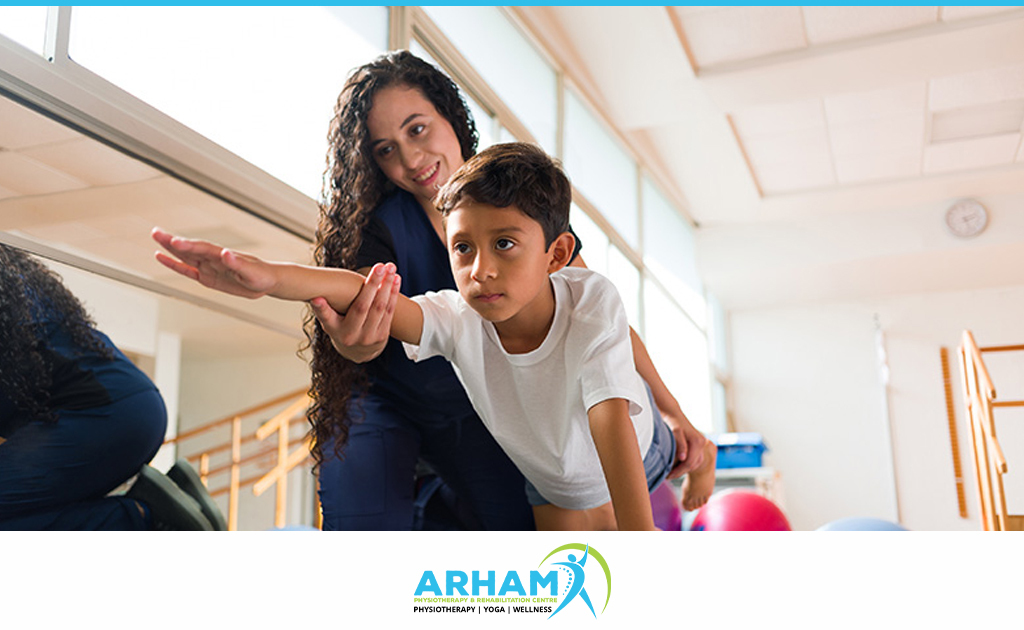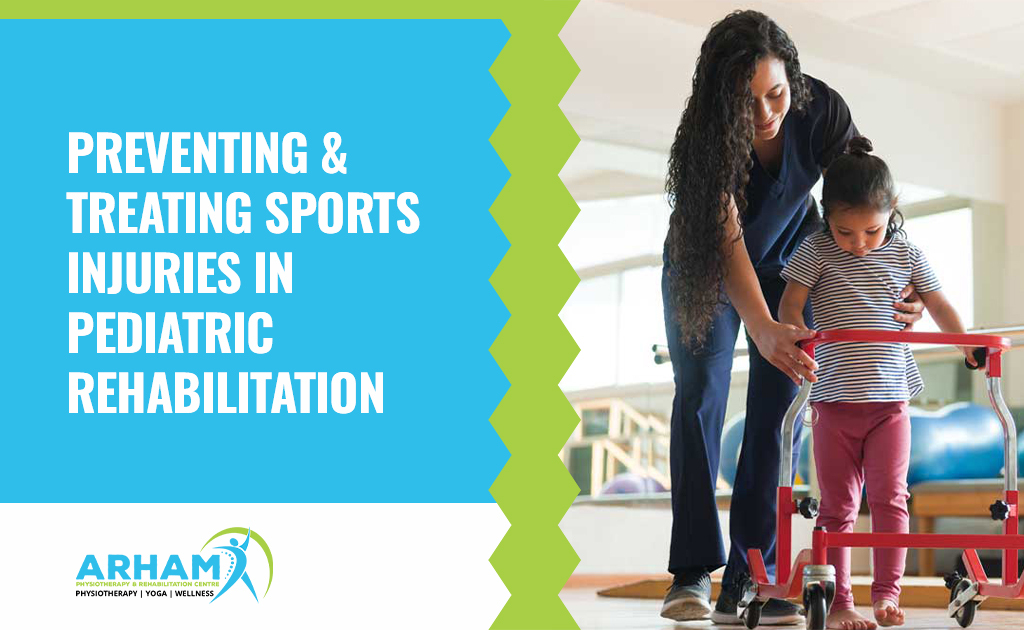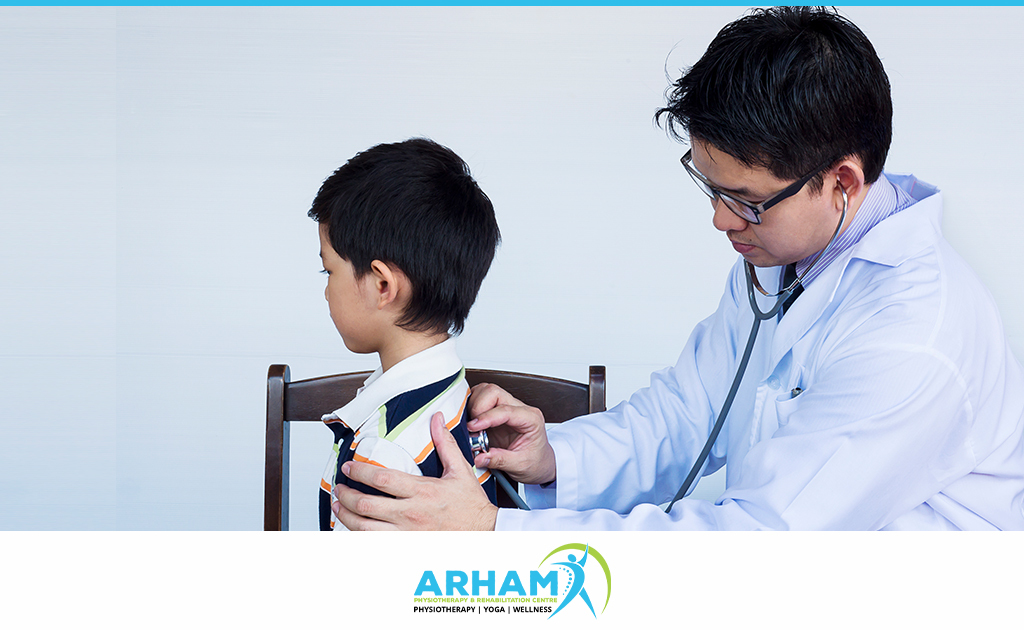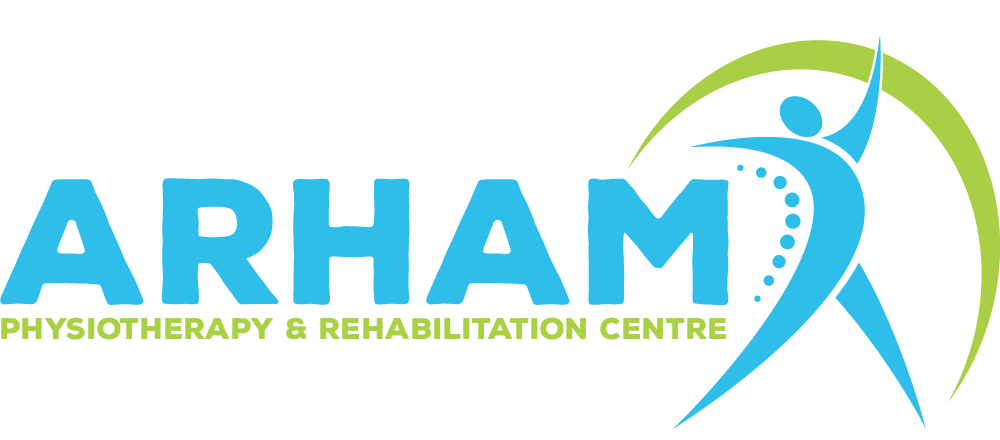Preventing and Treating Sports Injuries in Pediatric Rehabilitation
Introduction
Sports offer children physical development and valuable life skills, but the risk of injury is ever-present. Prioritizing safety is crucial. Pediatric rehabilitation plays a vital role in preventing and treating sports injuries, ensuring swift recovery and a return to activities. This blog explores injury prevention and effective rehabilitation strategies, empowering young athletes to thrive safely.
Common Sports Injuries in Children
In children, sports injuries are a common occurrence due to their active participation in various physical activities. While engaging in sports provides numerous benefits, it also exposes children to potential injuries. Here are some common sports injuries seen in pediatric patients:
- Sprains: Sprains occur when ligaments, which connect bones together, are stretched or torn. Generally the knees, ankles, and and wrists are affected by them. Pain, swelling, and feeling difficulty in moving the joints are the general symptoms of that.
- Strains: Strains refer to the stretching or tearing of muscles or tendons. They often happen in areas like the hamstrings, groin, or back. Talking about the symptoms, pain, muscle weakness, swelling and muscle spams are the common symptoms of strains.
- Fractures: Fractures are broken bones and can range from minor cracks to complete breaks. Common fractures in children occur in the wrists, forearms, elbows, and ankles. Signs of a fracture include severe pain, swelling, deformity, and difficulty moving the affected area.
- Concussions: Concussions are the mild traumatic brain injuries, when something hits directly on head it becomes the reason to concussions. They can occur in contact sports or even non-contact activities. You can detect them by feeling headaches, dizziness, confusion, memory problems, nausea, and sensitivity to light or noise. It is crucial to promptly diagnose and manage concussions to prevent further complications.
- Overuse injuries: Overuse injuries happen when a particular area of the body has to bear the repetitive stress without having sufficient time for recovery. Someone who is attached with sports involving the repetitive motions like running, swimming, or throwing has to suffer from these injuries mostly. Examples of overuse injuries include stress fractures, tendonitis, and growth plate injuries. Symptoms include pain, swelling, and difficulty with specific movements.

Importance of Injury Prevention in Youth Sports
Injury prevention in youth sports is of utmost importance due to the vulnerability of young athletes.
Children and adolescents have developing bodies, making them more susceptible to injuries. Growth plates, present in growing bones, are particularly at risk. To address the concerns, implementing proper warm-up routines, conditioning exercises, and injury prevention programs tailored specifically for youth sports is essential.
Implementing Proper Warm-up Routines
A comprehensive warm-up routine is a crucial aspect of injury prevention in youth sports. It increases the blood flow to the muscles improves flexibility and enhances neuromuscular coordination that encourages the body to do physical activities. Dynamic stretches, such as walking lunges or high knees, can help increase range of motion and joint stability. It’s essential to include the sport-specific movement during the warm-ups because it prepares the athletes mentally and physically to play their respective sports.
Conditioning Exercises for Injury Prevention
When the chances of injuries are minimized, young athletes can enhance their performance.
Improvement in strength, endurance, and overall fitness helps a lot to happen so. Children need to become used to the conditioning exercise as it plays an essential role to reduce the risk of sports-related injuries in them.
Implementing age-appropriate strength training exercises, such as bodyweight squats or resistance band exercises, helps develop muscular strength and stability.
Endurance-focused activities like running or cycling can boost cardiovascular fitness.
It’s important to design conditioning programs that are suitable for the developmental stage of the child, gradually progressing in intensity and complexity over time.
Protective Equipment for Youth Athletes
Protective equipment plays a crucial role in safeguarding the well-being of youth athletes during their rigorous sporting activities. By providing an extra layer of defense, these gears not only mitigate the risk of injuries but also boost confidence and enhance performance. From head to toe, here are some must-have protective equipment for young athletes.
- Helmets: Shielding young heads from concussions and head trauma, helmets are indispensable for sports like football, hockey, and biking.
- Mouthguards: Protecting teeth, and jaws, and preventing oral injuries, custom-fit mouthguards are essential for sports involving collisions and impacts.
- Shin Guards: Vital for soccer, field hockey, and martial arts, shin guards offer much-needed protection against lower leg injuries.
- Knee Pads: Ideal for sports like volleyball, basketball, and skateboarding, knee pads reduce the risk of knee strains and abrasions.
- Protective Eyewear: Vital for sports like basketball, racquet sports, and skiing, goggles or glasses with impact-resistant lenses safeguard young eyes from injuries.
Concussion Management in Pediatric Sports
A concussion is a common issue in pediatric sports, hence it’s essential to manage them, so below are the steps that you can follow to do so.
Early Recognition: Educating coaches, parents, and athletes about the signs and symptoms of concussions empowers them to identify potential injuries promptly.
Medical Evaluation: Seeking immediate medical attention is essential following a suspected concussion. A comprehensive evaluation helps determine the severity and guides the appropriate course of treatment.
Rest and Recovery: Resting the brain through physical and cognitive rest is vital to allow the brain to heal properly. Gradual return-to-play protocols should be followed, under the guidance of medical professionals.
Academic Support: Collaborating with school administrators and teachers to implement academic accommodations, such as reduced workload or extended deadlines, helps promote cognitive recovery.
Education and Prevention: Promoting awareness through concussion education programs and emphasizing proper technique and sportsmanship can reduce the risk of concussions in pediatric sports.
Overuse Injuries in Youth Sports
Overuse injuries are a serious issue for youth sports because it impacts the health of young athletes.
To prevent such injuries, several key strategies should be implemented. Firstly, tailoring training programs to the developmental stage of athletes helps avoid excessive stress on growing bodies.
Incorporating rest and recovery periods allows for proper healing and reduces the risk of overuse injuries.
Encouraging cross-training in multiple sports and activities diversifies movements, reducing repetitive strain on specific muscles or joints.
Emphasizing proper technique during training sessions minimizes the risk of overloading particular body parts.
Open communication among athletes, coaches, and parents ensures prompt identification and management of overuse injuries.
A preventive approach helps to protect the long-term well-being of youth athletes in youth sports.

Rehabilitation Strategies for Sports Injuries in Children
Involvement in sports activities plays a very major role in a child’s development, physical fitness, social interaction, and enhancement of skills.
However, sports injuries are an unfortunate reality that can impede a child’s participation and well-being.
Effective rehabilitation strategies are crucial for their recovery and future athletic endeavors.
Individualized treatment plans, including physical therapy, targeted exercises, and gradual return-to-play protocols, help children regain strength, mobility, and confidence.
Moreover, providing emotional support and emphasizing proper technique and injury prevention techniques contribute to long-term resilience.
By prioritizing comprehensive rehabilitation, we can ensure children bounce back stronger and continue to enjoy the benefits of sports participation.
Return-to-Sport Protocols for Pediatric Athletes
Returning to sports after a sports injury requires a careful and structured approach to ensure the safety and optimal recovery of pediatric athletes.
The step-by-step process involves considering both their physical and psychological readiness.
Individualized return-to-sport protocols are designed to gradually reintroduce athletes to their activities, starting with low-impact exercises and gradually increasing intensity and complexity.
Regular assessments by healthcare professionals monitor progress and determine when it is appropriate to move to the next stage.
Psychological Support for Injured Youth Athletes
Sports injuries can have a significant emotional and psychological impact on youth athletes.
It is crucial to recognize and address these challenges throughout the rehabilitation process.
Offering support and counseling to injured young athletes helps them cope with feelings of frustration, anxiety, and sadness.
Collaborating with sports psychologists and incorporating mental health strategies into their rehabilitation plan promotes overall well-being.
Remember, healing goes beyond the physical; nurturing their emotional health empowers them to overcome adversity and return stronger to their beloved sports.
Sports Injury Prevention Education
It’s essential to educate young athletes for ensuring their well-being and long-term health.
The parents, coaches, and athletes can work together to reduce the injuries risks by getting awareness and required knowledge.
Injury prevention programs focus on educating individuals about various key factors. Firstly, proper technique and form during training sessions are emphasized to reduce the risk of accidents and strain on vulnerable body parts.
Additionally, these programs highlight the significance of nutrition and hydration in supporting optimal performance and aiding in recovery.
Rest and recovery are essential components of injury prevention, preventing overuse injuries and burnout.
By educating athletes about the importance of scheduled rest days and adequate sleep, they can optimize their physical well-being.
This proactive approach ensures that young athletes can participate safely and confidently in their chosen activities.

Multidisciplinary Approach to Pediatric Sports Injury Rehabilitation
When it comes to pediatric sports injury rehabilitation, a multidisciplinary approach involving various healthcare professionals is crucial for comprehensive care.
Physical therapists, sports medicine physicians, orthopedic surgeons, and athletic trainers can produce the best outcomes for young athletes by collaborating with each other in a proper way.
In this multidisciplinary approach, each healthcare professional brings unique expertise to the table.
Physical therapists focus on rehabilitation exercises, flexibility, and strength training tailored to the individual needs of the young athlete.
Sports medicine physicians provide accurate diagnoses, manage treatment plans, and oversee the overall progress.
Orthopedic surgeons may be involved in cases requiring surgical interventions, ensuring optimal recovery and rehabilitation.
Athletic trainers play a vital role in injury prevention, immediate on-field care, and facilitating a safe return to play.
This collaborative effort fosters seamless communication and coordination, allowing for a holistic approach to pediatric sports injury rehabilitation.
By working together, these professionals ensure that young athletes receive comprehensive care, addressing not only physical healing but also emotional and psychological well-being.
Also Read: Knee Pain Physiotherapy
By emphasizing injury prevention, implementing effective treatment strategies, and offering comprehensive support, we create a safer environment for young athletes to thrive. Through collaboration between healthcare professionals, we ensure holistic care that addresses both the physical and psychological aspects of rehabilitation.
Together, let us continue to promote safe and healthy sports participation for pediatric athletes, enabling them to excel and enjoy their athletic endeavors to the fullest.
Frequently Asked Questions
How can sports injuries be prevented in pediatric athletes?
To prevent sports injuries in pediatric athletes, focus on warm-ups, proper technique, protective equipment, and balancing training with rest.
What are the most common sports injuries seen in children and adolescents?
Sprains, strains, affecting the ankles & knees, and fractures in the wrists & elbows are common injuries in children and adolescents. Overuse injuries like tendinitis from repetitive motions are also prevalent among young athletes.
How important is the use of protective equipment in youth sports?
Protective equipment in youth sports is extremely important as it helps minimize the potential for severe injuries and ensures the safety of young athletes.
What are the key considerations in managing concussions in pediatric sports?
Key considerations in managing concussions in pediatric sports include prompt removal from play, a thorough evaluation by a trained healthcare professional, followed by appropriate rest, gradual return-to-play protocols, and comprehensive education for athletes, parents, coaches, and school personnel.
What are some effective rehabilitation strategies for sports injuries in children?
Additionally, gradual progression, close monitoring, and proper guidance from healthcare professionals are essential for a successful rehabilitation process along with a combination of supervised physical therapy exercises to improve strength, flexibility, and range of motion.

Pingback: How to Prevent Accidental Fractures
Pingback: How Pain Relief Physiotherapy Can Help You Recover Faster
Pingback: The Ultimate Posture and Back Pain Exercise and Stretch Guide